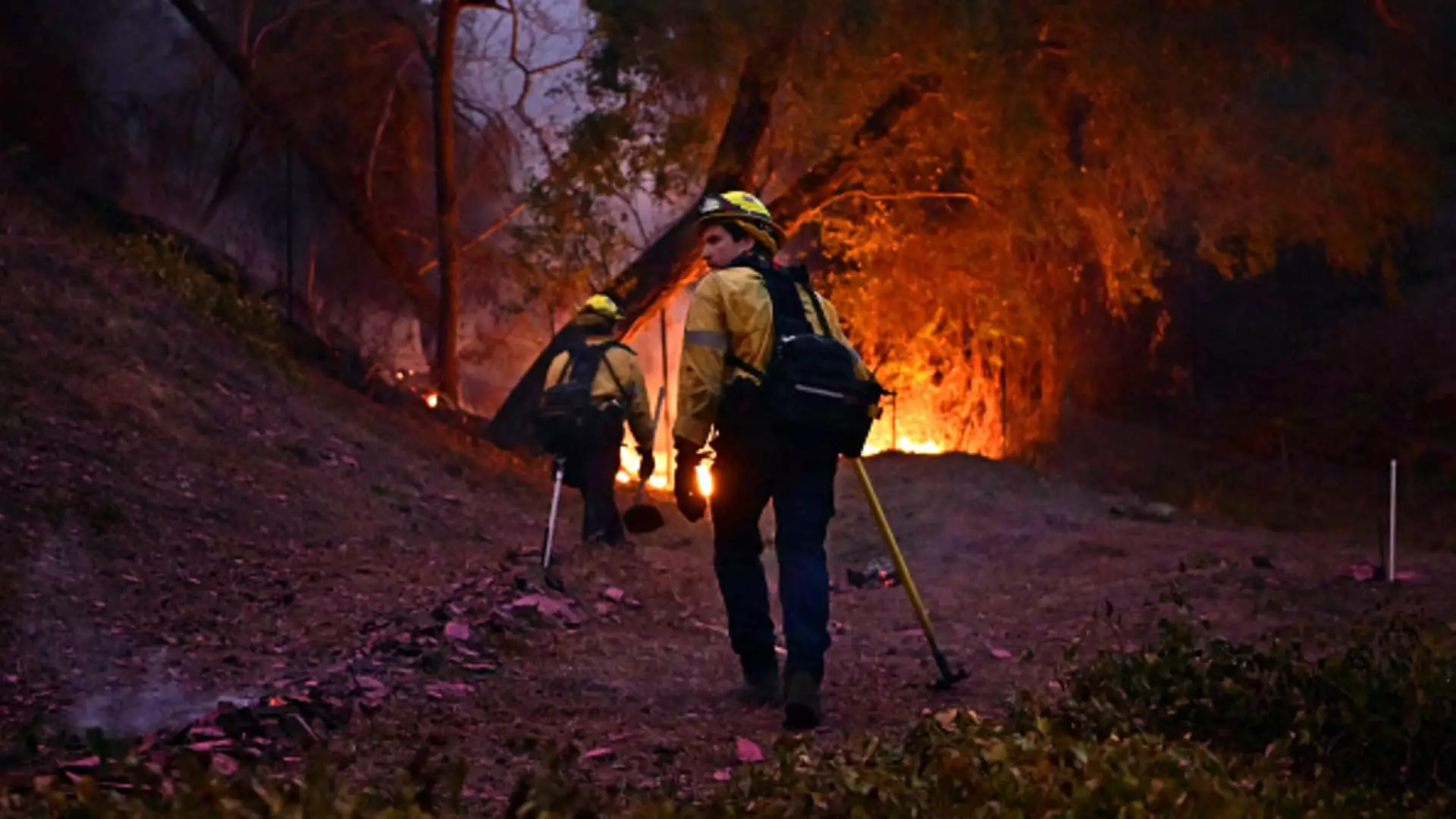The wildfire crisis sweeping through Los Angeles has reached catastrophic levels, as recent reports put the confirmed death toll at 16, with ongoing investigations into the circumstances surrounding these casualties. This grim figure reflects the escalating threat posed by two primary blazes—the Palisades Fire and the Eaton Fire—which have claimed five and eleven lives, respectively. Initially reported at eleven fatalities, authorities cautioned that this number could rise as recovery teams and search dogs are deployed to comb through the wreckage of neighborhoods reduced to ashes.
The sheer scale of devastation is staggering; wildfires have swept across approximately 56 square miles, larger than the city of San Francisco, resulting in more than 12,000 structures being engulfed in flames. The fires have not only affected the physical landscape but have also left deep emotional scars on the local communities, as countless families grapple with the loss of homes and cherished possessions.
Firefighting efforts in the region are grappling with a formidable foe. With favorable weather conditions giving way to fierce Santa Ana winds, firefighters are racing against time to halt the flames from endangering cultural landmarks such as the J. Paul Getty Museum and the University of California, Los Angeles (UCLA). On the front lines, firefighters are employing aggressive tactics—ground crews work tirelessly with hoses while helicopters drop water on the rapidly advancing fires. Those on the ground, including CalFire Operations Chief Christian Litz, have noted the importance of maintaining an aggressive stance in combating these wildfires to protect both lives and property.
The situation in Mandeville Canyon, an affluent area home to celebrities including actor Arnold Schwarzenegger, is particularly dire as flames rage downhill towards populated areas. Los Angeles County Supervisor Lindsey Horvath poignantly characterized the recent days as a time of “unimaginable terror and heartbreak,” as communities faced the anxiety of potential evacuations. The specter of disaster looms large, with many residents forced from their homes due to rapidly shifting fire boundaries, while emergency services scramble to maintain control.
The Human Toll and Community Impact
While significant efforts are dedicated to firefighting, the human element of this crisis cannot be overlooked. Thousands of residents remain under evacuation orders, struggling with uncertainty about what lies ahead. Emergency response teams have set up locations where individuals can report missing loved ones, reflecting a community in distress. The emotional toll is palpable; survivors are left to salvage what little remains, as exemplified by the heartbreaking words of Altadena resident Jose Luis Godinez, who lamented the loss of three homes that housed his extended family.
In the midst of despair, the willingness of the community to come together has been a small beacon of hope. Evacuation assistance centers and donation sites have flooded with volunteers eager to help, though the overwhelming generosity has led to some organizations having to turn people away. As families sift through donations at places like Santa Anita Park, the urgency of recovery becomes apparent, with each item representing a lifeline for those who have lost everything.
Despite the admirable community spirit, the crisis has unveiled systemic failures that demand immediate attention. Critiques of leadership in Los Angeles have surfaced, particularly pointing fingers at the lack of infrastructure in place to support first responders. Governor Gavin Newsom has initiated inquiries into why critical water resources, such as a 117 million-gallon reservoir, were out of service, exacerbating the firefighting response. Fire Chief Kristin Crowley voiced her frustrations, highlighting inadequate funding and logistical support for firefighting efforts.
As the situation continues to evolve, it is clear that not only will this crisis require immediate action, but it will also prompt significant discussions about future preparedness and resilience against natural disasters. The catastrophic fires burning across Los Angeles will linger in memory, and as recovery begins, there will be critical lessons learned that could shape the city’s approach to emergency management in the years to come.
In this ongoing battle against nature’s wrath, the tenacity of firefighters, the resilience of the affected communities, and the urgency of political accountability will be paramount in navigating out of this catastrophe. As Los Angeles faces its most formidable challenge, it stands united in hope and determination to rebuild and recover from the flames.

Leave a Reply